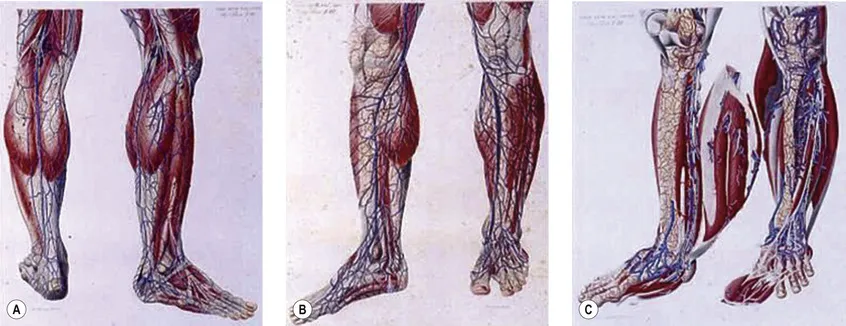
Sclerotherapy E-Book
Treatment of Varicose and Telangiectatic Leg Veins (Expert Consult)
- 448 pages
- English
- ePUB (mobile friendly)
- Available on iOS & Android
Sclerotherapy E-Book
Treatment of Varicose and Telangiectatic Leg Veins (Expert Consult)
About this book
This classic resource by Drs. Mitchel P. Goldman, Robert A Weiss, and Jean-Jerome Guex provides highly practical, up-to-date guidance for the effective management of varicose veins and other vascular anomalies. It is an indispensable reference for a wide audience including dermatologists, invasive radiologists, family practitioners, vascular and cosmetic surgeons. Clearly written by global experts, Sclerotherapy, 6th Edition, helps those new to the field to gain a firm understanding of successful techniques, as well as showing seasoned practitioners how to improve and hone their skills with today's best and newest approaches. Case studies and detailed color illustrations offer step-by-step visual guidance.- Covers everything you need to know with a practical approach, from the pathogenesis of varicosities to diagnostic and treatment options, including evidence-based decision making.- Helps you optimize outcomes and improve your surgical, injection, and laser techniques with comprehensive, visual guidance, including coverage of common pitfalls and "tricks of the trade."- Consult this title on your favorite e-reader, conduct rapid searches, and adjust font sizes for optimal readability.- Features hot topic coverage of endovenous glue and new endovenous ablation techniques, as well as updated techniques for optimal use of foam sclerotherapy and uses for solutions recently available on the market.- Discusses new concepts for treating areas other than the legs, including rejuvenation of the hands and chest.
Frequently asked questions
- Essential is ideal for learners and professionals who enjoy exploring a wide range of subjects. Access the Essential Library with 800,000+ trusted titles and best-sellers across business, personal growth, and the humanities. Includes unlimited reading time and Standard Read Aloud voice.
- Complete: Perfect for advanced learners and researchers needing full, unrestricted access. Unlock 1.4M+ books across hundreds of subjects, including academic and specialized titles. The Complete Plan also includes advanced features like Premium Read Aloud and Research Assistant.
Please note we cannot support devices running on iOS 13 and Android 7 or earlier. Learn more about using the app.
Information
Anatomy
Introduction

| Old Terminology | New Terminology |
| Femoral vein | Common femoral vein |
| Superficial femoral vein | Femoral vein |
| Sural veins | Sural veins Soleal veins Gastrocnemius veins (medial and lateral) |
| Hunterian perforator | Mid-thigh perforator |
| Cockett perforators | Paratibial perforator Posterior tibial perforators |
| May perforator | Ankle lateral and medial perforators |
| Gastrocnemius point | Intergemellar perforator |

Nomenclature
Table of contents
- Cover image
- Title Page
- Table of Contents
- Copyright
- Video Contents
- Preface
- Additional Contributors
- Introduction
- 1 Anatomy
- 2 Adverse Sequelae and Complications of Venous Hypertension
- 3 Pathophysiology of Varicose Veins
- 4 Pathophysiology of Telangiectasias
- 5 Noninvasive Examination of the Patient Before Sclerotherapy
- 6 Use of Compression Therapy
- 7 Mechanism of Action of Sclerotherapy
- 8 Complications and Adverse Sequelae of Sclerotherapy
- 9 Clinical Methods for Sclerotherapy of Varicose Veins
- 10 Role of Surgery in the Treatment of Varicose Veins
- 11 Intravascular Approaches to the Treatment of Varicose Veins
- 12 Clinical Methods for Sclerotherapy of Telangiectasias
- 13 Treatment of Leg Telangiectasias with Laser and High-Intensity Pulsed Light
- 14 Venoactive Drugs
- Index